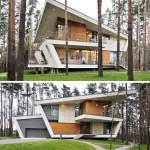Floor plans are an integral part of home design, providing a comprehensive blueprint of a property’s layout and spatial arrangement. Essentially, they serve as a visual representation of the floor space, outlining the location, shape, and dimensions of rooms, walls, doors, and windows. These plans are vital for understanding the flow of a home, allowing architects, builders, and homeowners to visualize the property before its construction or renovation.
Floor plans play a pivotal role in creating efficient and functional living spaces. They enable designers to consider factors such as natural light, traffic flow, and the overall size and proportions of the home. By carefully planning the layout, they can optimize space utilization, maximize storage options, and create a cohesive flow between rooms, ensuring a comfortable and practical living environment.
When creating floor plans for your house, there are several important points to consider:
- Room layout
- Traffic flow
- Natural light
- Storage space
- Furniture placement
- Energy efficiency
- Accessibility
- Future needs
These factors will help you create a home that is both functional and stylish.
Room layout
The room layout is one of the most important aspects of floor planning. It determines the flow of traffic through the home, the amount of natural light each room receives, and the overall functionality of the space. When planning your room layout, there are a few key things to keep in mind:
- Adjacency and proximity: Consider the relationships between different rooms and how they will be used. For example, the kitchen should be adjacent to the dining room, and the bedrooms should be located near the bathrooms.
- Traffic flow: The flow of traffic through the home should be smooth and efficient. Avoid creating bottlenecks or dead-end spaces.
- Natural light: Make sure that each room receives adequate natural light. This can be achieved by placing windows on multiple walls or by using skylights.
- Furniture placement: Consider how you will be using each room and how you will place furniture. This will help you determine the optimal layout for each space.
By carefully considering these factors, you can create a room layout that is both functional and stylish.
Traffic flow
Traffic flow refers to the movement of people through a space. When planning your floor plan, it is important to consider how people will move through the home and how to avoid creating bottlenecks or dead-end spaces.
There are a few key principles to keep in mind when planning for traffic flow:
- Create a clear main path of travel. This path should connect the main entrance to the most frequently used rooms, such as the kitchen, living room, and bedrooms.
- Avoid creating bottlenecks. Bottlenecks occur when there is only one way to get from one place to another. This can cause congestion and frustration.
- Provide multiple paths of travel. If possible, provide multiple ways to get from one room to another. This will help to distribute traffic and avoid congestion.
- Consider the flow of traffic when placing furniture. Furniture should be placed in a way that does not obstruct traffic flow.
By following these principles, you can create a floor plan that has a smooth and efficient traffic flow.
In addition to the above principles, there are a few other things to consider when planning for traffic flow:
- The size of the home. Larger homes will require more careful planning for traffic flow than smaller homes.
- The number of people living in the home. A home with a large number of people will require more space for traffic flow than a home with a small number of people.
- The type of activities that will take place in the home. If the home will be used for entertaining, for example, it will need to have a more open floor plan to accommodate guests.
By considering all of these factors, you can create a floor plan that has a traffic flow that meets your specific needs.
Natural light
Natural light is an essential element of any home. It can make a space feel more inviting, spacious, and cheerful. When planning your floor plan, it is important to consider how to maximize the amount of natural light that enters your home.
There are a few key ways to incorporate natural light into your floor plan:
- Place windows and doors on multiple walls. This will help to distribute natural light throughout the space.
- Use skylights. Skylights are a great way to bring natural light into dark or windowless spaces.
- Choose light-colored finishes. Light-colored finishes reflect light, making a space feel brighter.
- Avoid placing furniture in front of windows. This will block natural light from entering the space.
By following these tips, you can create a home that is filled with natural light.
In addition to the above tips, there are a few other things to consider when planning for natural light:
- The orientation of your home. The orientation of your home will determine how much natural light it receives. Homes that are oriented towards the south will receive more natural light than homes that are oriented towards the north.
- The size and shape of your windows. The size and shape of your windows will also affect the amount of natural light that enters your home. Larger windows will let in more light than smaller windows, and windows that are placed high on the wall will let in more light than windows that are placed low on the wall.
- The type of glass used in your windows. The type of glass used in your windows can also affect the amount of natural light that enters your home. Clear glass will let in more light than tinted glass, and double-paned windows will let in more light than single-paned windows.
By considering all of these factors, you can create a floor plan that maximizes the amount of natural light in your home.
Natural light is an important element of any home. It can make a space feel more inviting, spacious, and cheerful. When planning your floor plan, take the time to consider how to maximize the amount of natural light that enters your home.
Storage space
Storage space is an important consideration when planning your floor plan. You need to have enough storage space to accommodate all of your belongings, but you also don’t want to waste space on unnecessary storage. Here are a few tips for planning your storage space:
- Consider your needs. What types of belongings do you need to store? How much space do you need for each type of belonging? Once you know your needs, you can start to plan your storage space.
- Maximize vertical space. Vertical space is often overlooked when planning storage space. However, it can be a great way to save space. Use shelves, drawers, and cabinets to store items vertically.
- Use multi-purpose furniture. Multi-purpose furniture can be a great way to save space and add style to your home. For example, an ottoman with built-in storage can be used to store blankets, pillows, or toys.
- Don’t forget about outdoor storage. If you have a garage or shed, you can use it to store seasonal items or bulky items that you don’t need to access on a regular basis.
By following these tips, you can create a floor plan that has plenty of storage space without wasting space.
In addition to the above tips, here are a few other things to consider when planning your storage space:
- The size of your home. The size of your home will determine how much storage space you need. A larger home will require more storage space than a smaller home.
- The number of people living in the home. The number of people living in the home will also affect how much storage space you need. A home with more people will require more storage space than a home with fewer people.
- The type of lifestyle you live. If you live a minimalist lifestyle, you will need less storage space than someone who has a lot of belongings.
By considering all of these factors, you can create a floor plan that has the perfect amount of storage space for your needs.
Storage space is an important part of any home. By following these tips, you can create a floor plan that has plenty of storage space without wasting space.
Furniture placement
Furniture placement is an important part of floor planning. It can affect the flow of traffic, the amount of natural light in a space, and the overall functionality of the room. When planning your furniture placement, there are a few key things to keep in mind:
- Consider the function of the room. What activities will take place in the room? How will people move around the room? Once you know the function of the room, you can start to plan the furniture placement.
- Create a focal point. Every room should have a focal point, which is a central point of interest. This could be a fireplace, a large window, or a piece of art. Once you have determined the focal point of the room, you can arrange the furniture around it.
- Create conversation areas. If the room is large enough, create conversation areas where people can sit and talk. Place chairs and sofas in a grouping around a coffee table or ottoman.
- Leave enough space for traffic flow. Make sure to leave enough space between furniture pieces so that people can move around the room easily. Avoid blocking doorways or windows with furniture.
By following these tips, you can create a furniture placement plan that is both functional and stylish.
Energy efficiency
Energy efficiency is an important consideration when planning your floor plan. By making smart choices about the layout of your home, you can reduce your energy consumption and save money on your utility bills.
- Orient your home to take advantage of natural light. Homes that are oriented towards the south will receive more natural light than homes that are oriented towards the north. This can help to reduce your lighting costs and make your home more comfortable.
- Place windows and doors strategically. Windows and doors can be a major source of heat loss in the winter and heat gain in the summer. By placing windows and doors on the south side of your home, you can take advantage of natural light and reduce your energy consumption.
- Insulate your home well. Insulation is one of the most important factors in energy efficiency. By insulating your home well, you can reduce heat loss in the winter and heat gain in the summer. This can help to lower your energy bills and make your home more comfortable.
- Use energy-efficient appliances and fixtures. Energy-efficient appliances and fixtures can help to reduce your energy consumption. Look for appliances and fixtures that have the Energy Star label. These products meet strict energy efficiency standards and can help you to save money on your energy bills.
By following these tips, you can create a floor plan that is both energy efficient and stylish.
Accessibility
Accessibility is an important consideration when planning your floor plan. It ensures that everyone, regardless of their abilities, can safely and easily use and enjoy your home.
- Provide clear and accessible pathways. All pathways, including hallways, doorways, and stairs, should be wide enough for a wheelchair or walker to pass through easily. There should also be no obstacles or tripping hazards in the way.
- Install ramps or elevators. If your home has multiple levels, you should install ramps or elevators to make it accessible for people with mobility impairments. Ramps should have a gentle slope and be equipped with handrails, while elevators should be large enough to accommodate a wheelchair.
- Design bathrooms and kitchens with accessibility in mind. Bathrooms should have roll-in showers or bathtubs, grab bars, and accessible sinks. Kitchens should have accessible countertops and appliances, as well as adjustable-height cabinets and drawers.
- Use universal design principles. Universal design is a design approach that creates spaces that are accessible to everyone, regardless of their abilities. When designing your home, consider using universal design principles, such as using lever handles instead of knobs, providing clear signage, and minimizing the use of stairs.
By following these tips, you can create a floor plan that is accessible to everyone, regardless of their abilities.
Future needs
When planning your floor plan, it is important to consider your future needs. This includes thinking about how your needs may change over time, as well as the needs of any other people who may live in your home in the future.
- Changing family needs. If you have a young family, you may need to consider the need for a playroom or extra bedrooms. If you have older family members living with you, you may need to consider the need for accessible features, such as a first-floor bedroom and bathroom.
- Aging in place. If you plan to stay in your home as you age, you may need to make modifications to your floor plan to make it more accessible. This could include adding ramps or elevators, widening doorways, and installing grab bars in the bathroom.
- Changing lifestyle. Your lifestyle may change over time. For example, you may start working from home or take up a new hobby that requires a dedicated space. When planning your floor plan, consider how your lifestyle may change and how you can accommodate those changes.
- Resale value. If you ever plan to sell your home, you should consider the resale value of your floor plan. Homes with well-thought-out floor plans that meet the needs of a variety of buyers are more likely to sell quickly and for a higher price.
By considering your future needs when planning your floor plan, you can create a home that will meet your needs for many years to come.










Related Posts








